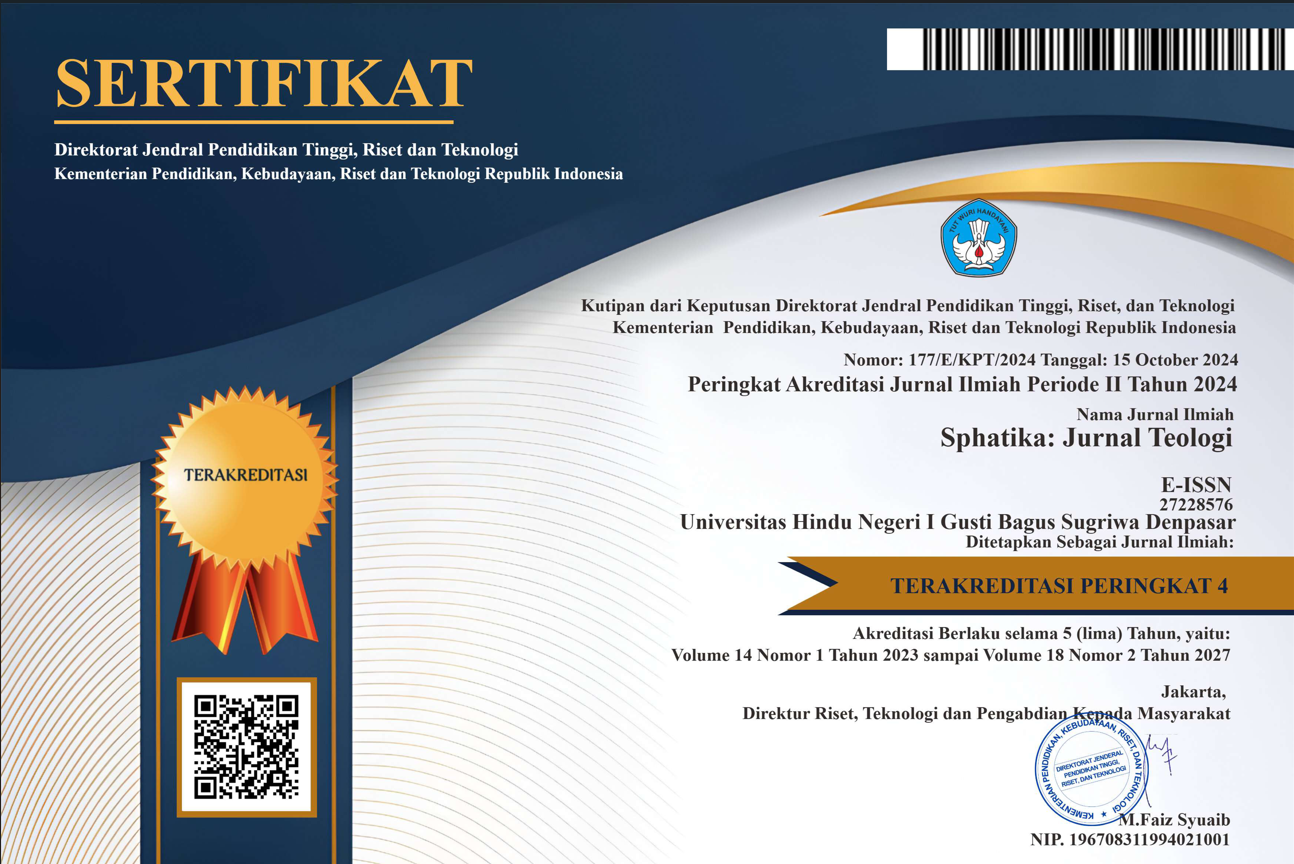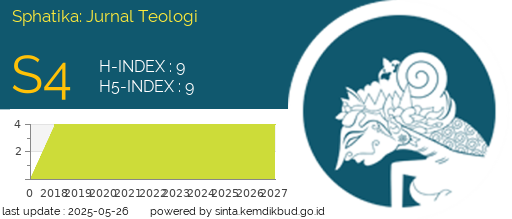Child Free Perspektif Agama Hindu
DOI:
https://doi.org/10.25078/sphatika.v13i2.1988Keywords:
child free; Hindu religionAbstract
After the second world war, the increase in the world's population was so rapid that it raised issues of environmental damage, food security, and increased crime cases. This causes some densely populated countries to limit the number of births. The birth of a child leaves a carbon footprint of up to 58.6 tons/year. This is what causes the Childfree movement to emerge as one of the solutions offered by modern humans in overcoming environmental issues. The driving factors include environmental awareness, to a consumptive lifestyle due to capitalist ideology. Hinduism in its teachings views that having children is a obligation for parents because children can be the glue of husband-wife relationships and having children who are suputra is the main Yajna. Intelligent children will be able to solve the problems they face, including environmental issues which became the initial basis for the Child free movement. So not having children is not the only solution to overcome environmental damage. The method used in this article uses a qualitative method and uses a phenomenological approach which is described descriptively. The data in this article was obtained through literature studies, both from articles published in journals, Hindu religious sacred texts combined with analysis of data obtained and sourced from the internet in the form of documents, news to videos that are shown on the YouTube platform.
References
Arfani, R. N. (2004). Globalisasi ; Karakteristik dan Implikasinya. Ekonomi Politik Digital Journal Al-Manar, 1(April 2004), 1–13.
Awaluddin, M., & Hidayat, R. (2018). Kerusakan Lingkungan Dalam Kegiatan Peningkatan Produktivitas Manusia Sebagai Tantangan Pemerintah Daerah. Jurnal Administrasi Publik, 3(2), 63–67. https://www.ejournal.warmadewa.ac.id/index.php/public-inspiration/article/view/923
Bakti, I. S., Anismar, A., & Amin, K. (2020). Pamer Kemewahan: Kajian Teori Konsumsi Thorstein Veblen. Jurnal Sosiologi USK (Media Pemikiran & Aplikasi), 14(1), 81–98. https://doi.org/10.24815/jsu.v14i1.18109
Basten, S. (2009). Voluntary childlessness and being Childfree The Future of Human Reproduction. The Future of Human Reproduction, 5(June), 1–23.
Bell, K. (2013). Constructions of “Infertility” and Some Lived Experiences of Involuntary Childlessness. In Affilia - Journal of Women and Social Work (Vol. 28, Issue 3). https://doi.org/10.1177/0886109913495726
Fajariah, M., & Suryo, D. (2020). Sejarah Revolusi Industri di Inggris Pada Tahun 1760-1830. HISTORIA : Jurnal Program Studi Pendidikan Sejarah, 8(1), 77. https://doi.org/10.24127/hj.v8i1.2214
Faruq, U. Al, & Mulyanto, E. (2017). Sejarah Teori-Teori Ekonomi (Issue 1).
Frejka, T. (2017). Childlessness in the United States. In Demographic Research Monographs. https://doi.org/10.1007/978-3-319-44667-7_8
G. Pudja dan Tjokorda Rai Sudharta. (2004). Manava Dharma Sastra. Paramita Surabaya.
I Made Titib. (2003). Menumbuhkembangkan Pendidikan Budhi Pekerti Pada Anah (Perspektif Agama Hindu). Ganeca.
Oka, I. G. A. (1995). Slokantara. Hanuman Sakti.
Parisadha Hindu Dharma Indonesia. (2013). Swastikarana (Pedoman Ajaran Hindu Dharma). PT. Mabhakti.
Patnani, M., Takwin, B., & Mansoer, W. W. (2021). Bahagia tanpa anak? Arti penting anak bagi involuntary childless. Jurnal Ilmiah Psikologi Terapan, 9(1), 117. https://doi.org/10.22219/jipt.v9i1.14260
Pilliang, Y. A. (2010). Post - Realitas, Realitas Kebudayaan dalam era Post Metafisika ( alfatri Adlin (ed.); 3rd ed.). Jalasutra.
Siman Widyatmanta. (1958). Kitab: Adi Parwa I&II (ketiga). U.P. Spring.
Utomo, T. (2018). PERBEDAAN KELOMPOK GENERASI & TANTANGAN YANG DIHADAPI OLEH PERGURUAN TINGGI A. Personifikasi, 9(May), 1–29.
















